EDInsights is a Norwegian startup company that provides products and services based on geospatial information. They are a diverse and international team with expertise on operational hydrology, remote sensing, and system development, and they build on individual expertise to excel as a team. Their passion is to provide great satellite-based products and services to all corners of the world and across applications.
I recently sat down with Kris Nackaerts, CTO of EDInsights AS, to hear about his experience with geospatial and location technology, as well as to get his take on industry trends and emerging opportunities. Here’s what he had to say:

What is your current occupation/role?
I’m currently CTO at a startup called EDInsights, located in Norway. We deliver business intelligence based on spaceborne analytics focused on the hydropower and financial industries.
Tell us about your past work and research, and how geospatial/location technology was relevant in your different functions.
Since my master thesis as an agriculture engineer, I’ve been handling spatial data. It took off with error propagation modeling for viewshed analysis in an archaeological context. Geospatial data is most often not as perfect as one imagines it to be. Error modeling and sensitivity analysis has always been an important point of attention for me. My next focus was quantitative change detection based on satellite imagery, the subject of my PhD. After an academic track, I moved to the industry and worked four years for Intergraph, where I was introduced to the utility sector and spatial databases. I started as a developer and quickly moved on to become a project manager. I still refer to it as the period I learned to know the ‘real world’. I especially learned to listen and objectively understand the customer’s needs. I took all these experiences with me when I worked as a senior remote sensing researcher at VITO (Vlaams Instituut voor Technologisch Onderzoek, Belgium), moving on to become responsible for research and development at Kongsberg Satellite Services (KSAT) in Tromso, Norway, and working as a geospatial consultant focused on high fidelity geospatial analytics. In general terms, my interest lies mainly in extracting high-value signals from geospatial data, whatever the source is: drones, satellites and/or IoT.
What is the most exciting or surprising insight that location technology has given you?
The actionable information content of geospatial data is often much higher than we are aware of. Even the widely known and used MODIS data can still reveal secrets today, especially when analyzed differently from common standards. An out-of-the-box approach, with existing data, often results in new insights. Even after having used data for 10 years, it can still surprise me. What is extra exciting in this context are recent advancements in visual analytics: visualizing data in a creative and innovative way to assist our brains in identifying meaningful relationships and patterns.
From your perspective, what is the biggest challenge for the location technology industry?
The biggest challenge I see in our industry is analyzing user requirements objectively and providing “simple” solutions based on best-in-class existing technologies. I still see too many solutions that are more focused on technology and not enough on real user needs. User needs are hereby not limited just to the type of information, but also the way it is presented and/or delivered. Innovation should improve the simplicity of tomorrow’s solution but not hinder today’s creativity. We need to have the courage to hide the complexity of our work and satisfy the client. Or, as Charles Mingus once said, “Making the simple complicated is commonplace; making the complicated simple, awesomely simple, that’s creativity.”
What Hexagon’s Geospatial division technologies did you use and for what purpose? What did you like most about the interaction?
I used Hexagon Geospatial technologies mainly in two different settings. The first context was at VITO, where we co-developed a patented technology for versioning highly spatio-temporal fragmented raster data (bathymetry). We needed a flexible technology that would allow us to integrate this innovative algorithm seamlessly and provide high performance. The open architecture, performance, and integration capabilities of Luciad technologies were decisive arguments. A skilled developer and the right tools combined with passionate Luciad support guaranteed the successful translation of an idea into an operational service. A few years later, at KSAT, we needed a specific solution to visualize and share satellite imagery online for a customer. We were faced with a challenging timeframe and needed to act efficiently. Options were analyzed, and based on performance and past experiences, I proposed Luciad’s technology with all the implementation work executed by a dedicated Luciad development team. Functional and technical analysis and the project plan and execution were delivered on time with exceptional performance and a satisfied customer. My experience with Luciad/Hexagon: they never let you down. Truly professional products and services.
Hexagon doesn’t just offer geospatial software, but also a data content program, sensors, modeling, and simulation tools. Where do you see the most potential for synergy?
You can have an exceptional cook with the best kitchen equipment on the planet, but without the right raw ingredients he’ll not be able to serve the best experience for his clients. The faster delivered and better stored and organized ingredients are, the more he can focus on creating a unique and satisfying experience. The same is true for geospatial software. At its core, geospatial software loads, extracts, and transforms spatial data. The more efficiently that data is found, delivered in a usable format, and “focused,” the more effectively the expert can create industry-specific value for his customer.
One example I’m most familiar with is extracting information from satellite imagery. As a startup company, maximizing the use of a content program, integrated models, and existing tools allows us to focus our resources to solve specific challenges in the hydropower industry and financial sector.
What should be Hexagon Geospatial’s next ‘big bet’ in terms of R&D or innovation?
One emerging domain I’ve witnessed that needs better support from our industry is LiDAR. Driven by the automotive industry, LiDAR technology has become more cost efficient over the last two to three years. Drones are capable of carrying these sensors today, and we can expect more innovative hardware solutions to appear over the next few years. Having worked with LiDAR data personally, I see several opportunities for innovative automated processing, classification, and feature extraction solutions that the market is lacking. All of this could be tightly integrated into current Hexagon Geospatial solutions and workflows.
















